Want to read in Dutch? Click here
At the beginning of February, the Dutch Railway company announced that it would stop with rail catering. If rail catering is not ringing any bells with you, these are the people who offer you coffee and snacks on the train. Because there are more and more shops and kiosks at the stations, it is no longer profitable.
Although NS is stopping after fourteen years, serving coffee on the train is a service that has existed in the Netherlands for a long time. I spoke with Tuur Verdonck, Curator of Technology and Railway Innovation at the Railway Museum, about what rail catering used to look like and what the employees wore.
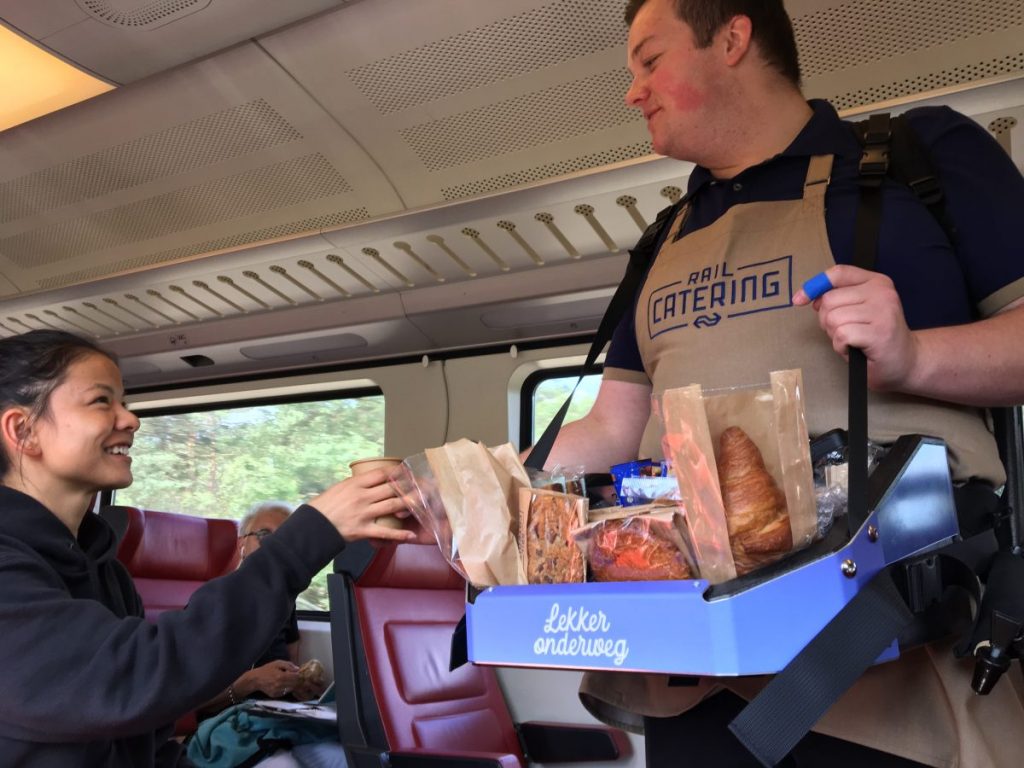
NS rail catering uniform: from the past to present
In the seventeenth century, travelers were already being served coffee on the train, only this service looked a lot different. Dressed in formal clothes, waiters were waiting for the trains at the stations. As soon as a train arrived, coffee was served through the window or door. Because disposable cups did not exist, the coffee had to be quickly consumed and the porcelain cup handed back to the waiter. This waiter was usually dressed in the same style you’d see in chic restaurants.
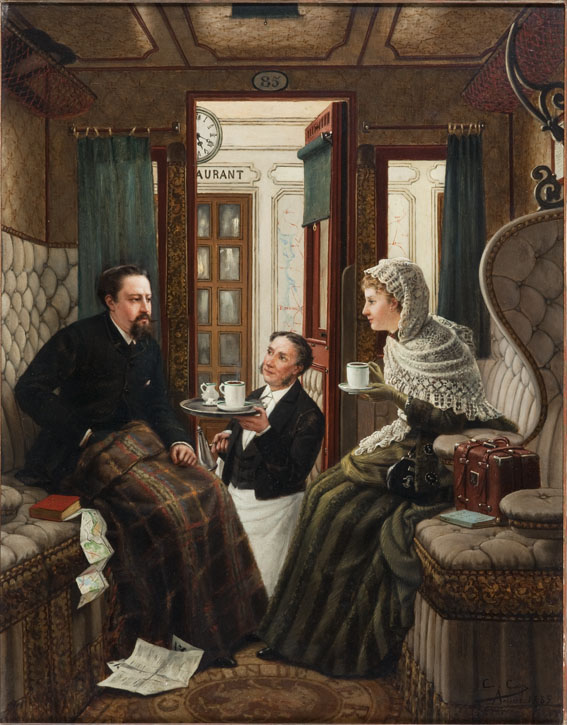
Early 1900s
In the nineteenth century, it was Wagons-Lits who provided catering on Dutch trains until the 1980s. This period saw waiters traveling on the train and serving coffee.
The French company thought that a neat, traditional clothing style was important. The servers at the stations and later on the trains wore a white jacket with a black tie. That is exactly what the Dutch Railways wanted: the rail catering had to be a treat and radiate luxury.
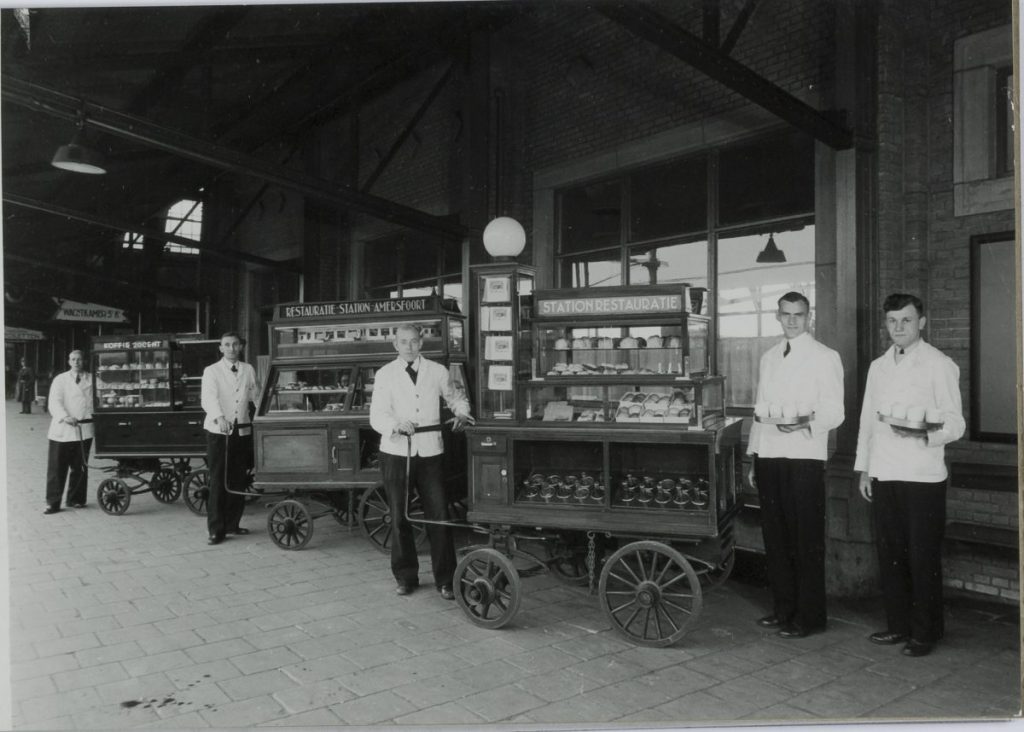
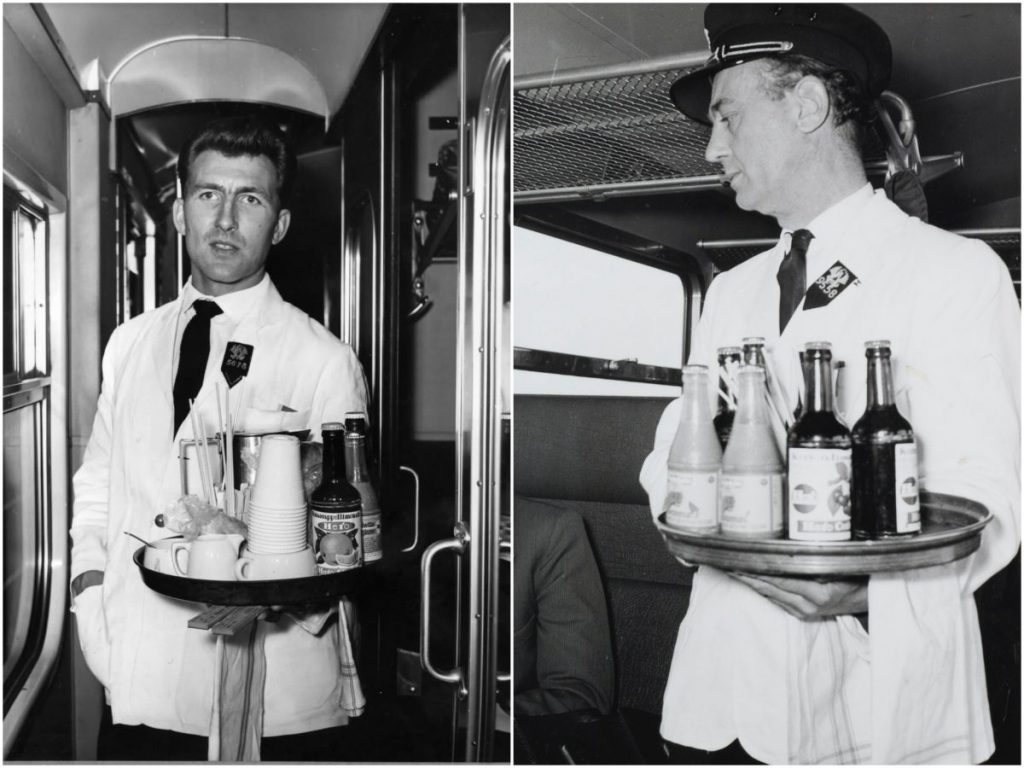
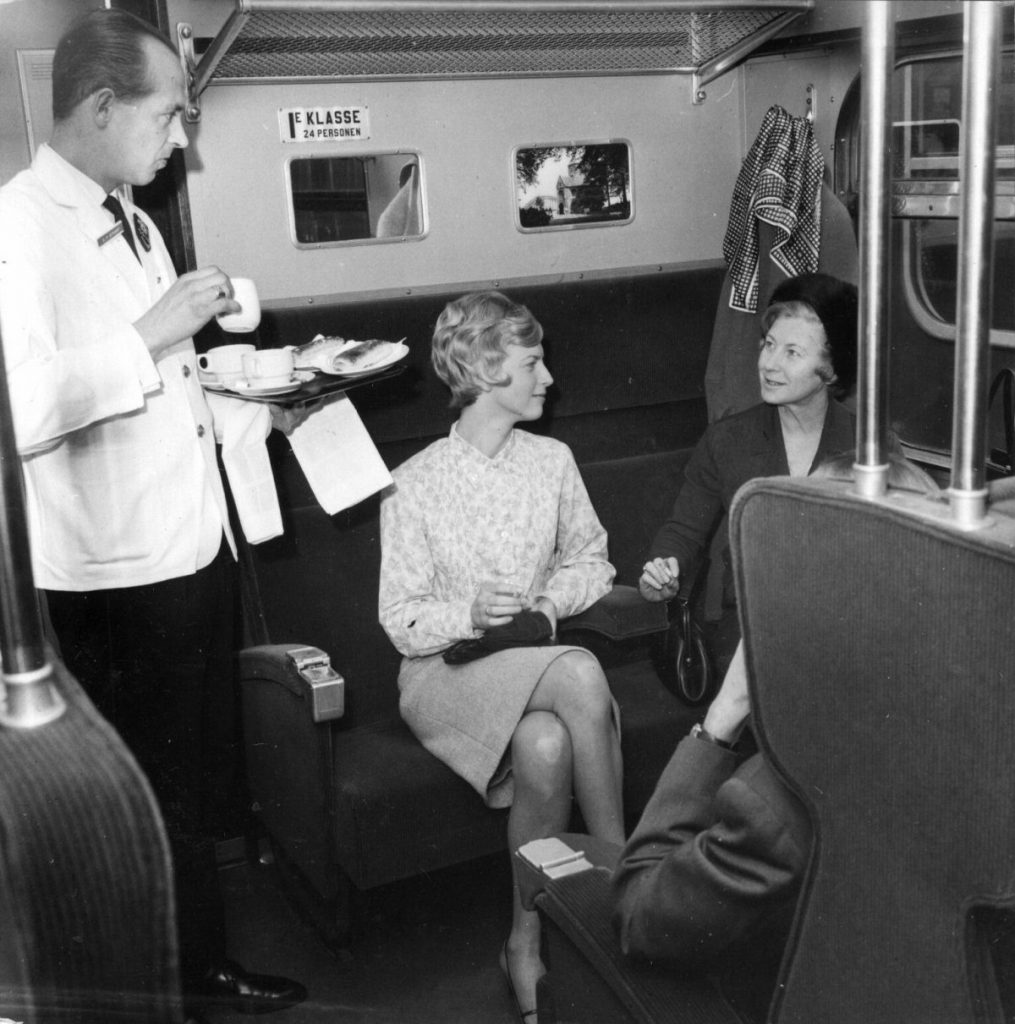
Modern style
From the 1970s onwards, Dutch Railways wanted to change the clothing style. It had to be more modern, and so the clothes became a combination of brown and orange. These were the fashionable colors at the time. And the classic black and white suits were a thing of the past. In the years that followed, the eighties and nineties, the style became increasingly casual and modern in appearance.
In the nineties, after more than a hundred years, the cooperation between NS and Wagons-Lits came to an end and Dutch company Albron became responsible for rail catering. In addition to the waiters serving coffee on the train, there were also train compartments with a café.
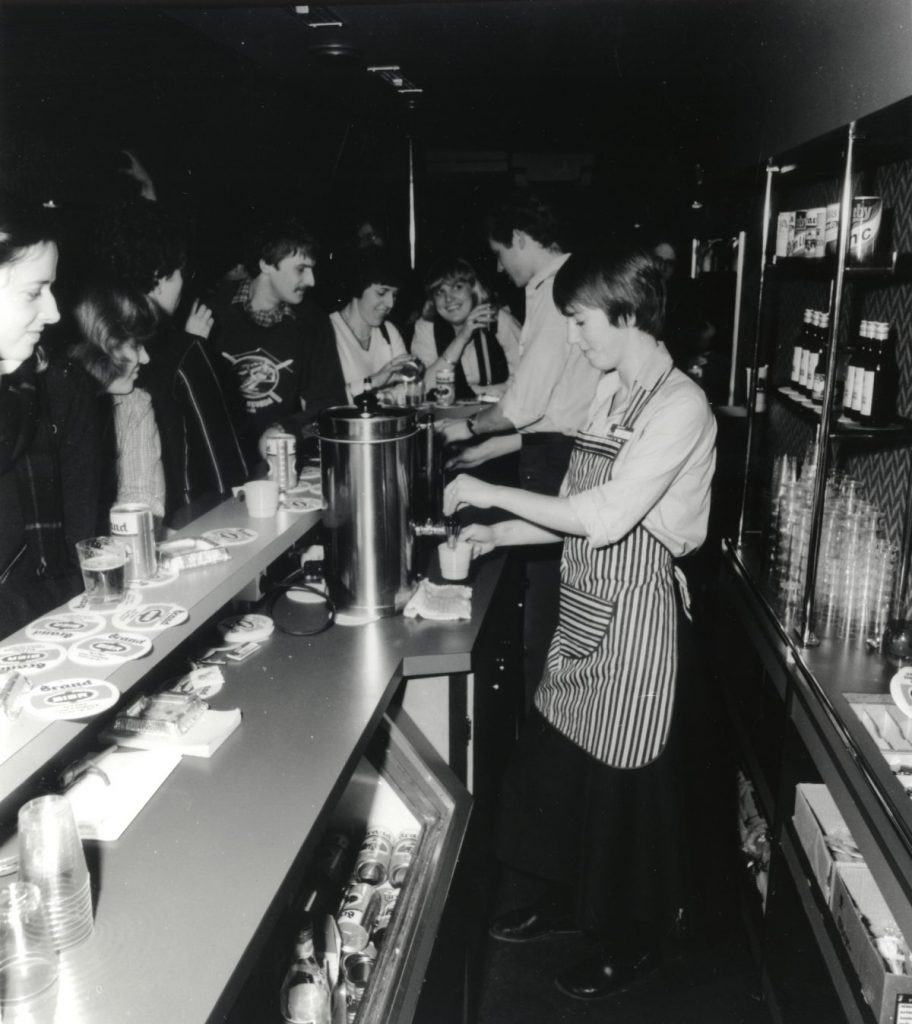
The barista
In 2000, Dutch Railways decided to temporarily stop rail catering, only to reorganize it a few years later. The company’s clothing remained modern but also changed in appearance. First, there was a red T-shirt with the logo of ice cream brand Ola on it. Next came black T-shirts and polos that featured coffee brand Douwe Egberts.
Two years ago, the style was again changed. They wanted more of a barista appearance and so the colors dark blue and beige were combined. They also added an apron to the uniform.
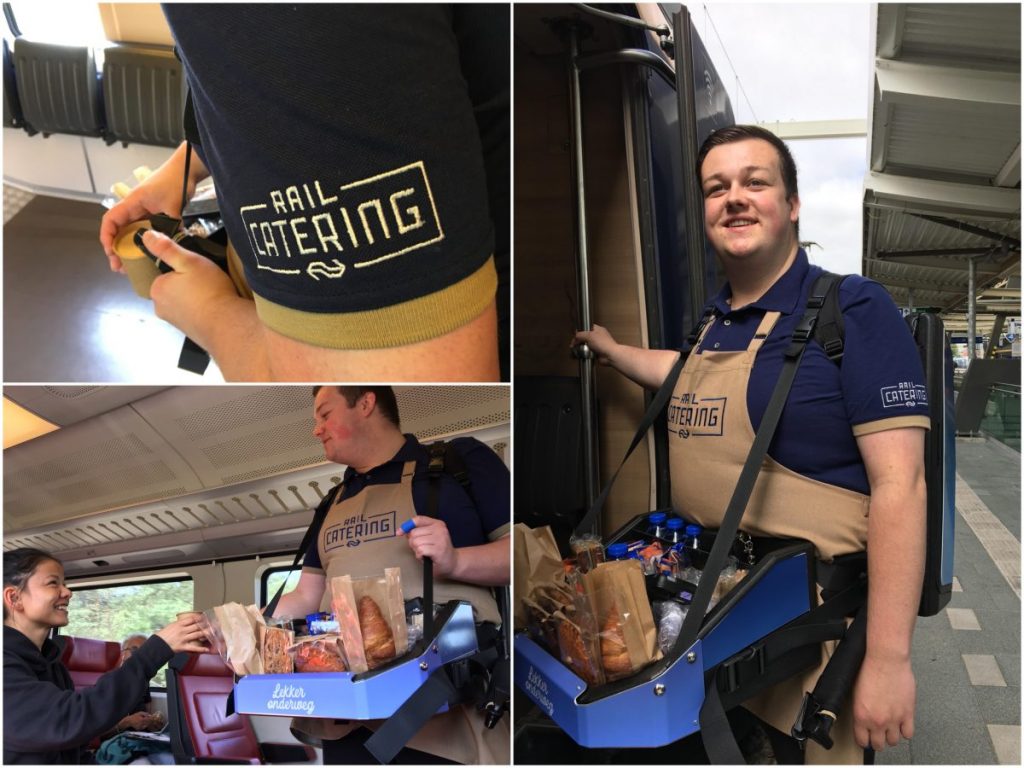
End of an era? Or not?
On February 1, the last uniform was handed over to the Railway Museum. The remaining 350 uniforms will be recycled and used in the uniforms at the station shops. Fortunately, the 73 rail catering employees are not immediately jobless. They are all employed in the shops at the stations.
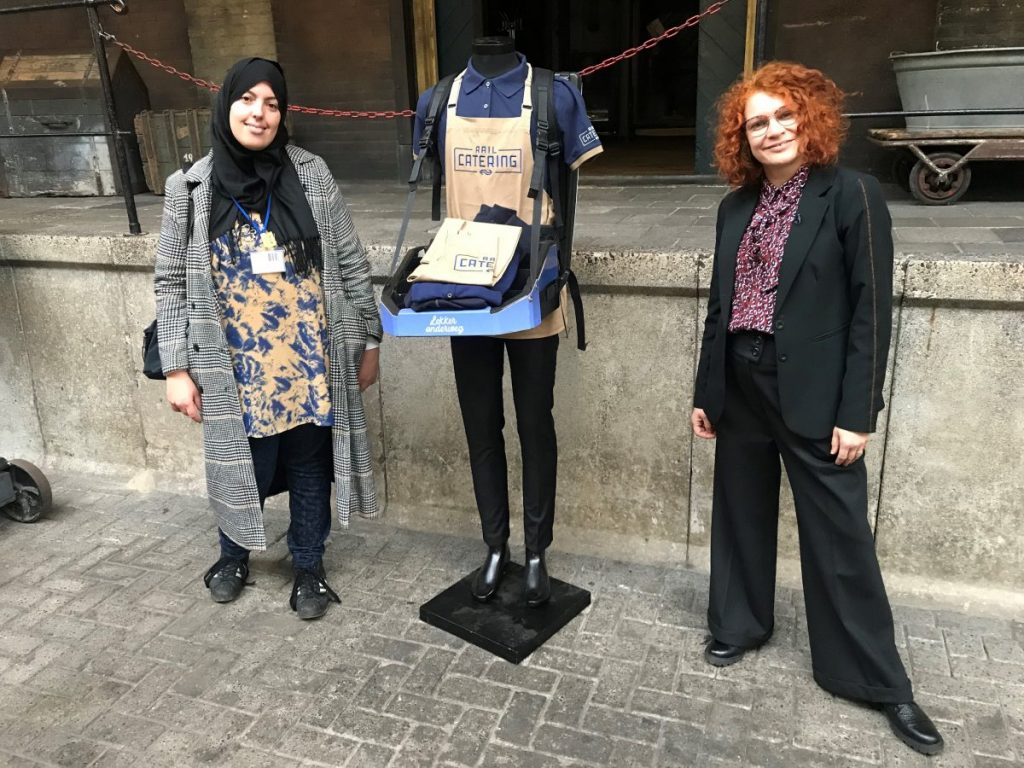
It seems like the end of an era, but the question is for how long. In 2000, Dutch Railways also pulled the plug on rail catering only to try again a few years later. I understand that the service is not very profitable in times of a pandemic, but I expect it to return. It remains a good way to make a train journey more pleasant. But first, the economy needs to pick up a bit…
Greetings,

WOW!
Your website looks so perfect.
Everything is nice not over rated your blogs content every thing is awesome.
Appreciated man.
Good Wishes From REDOLANCE.
https://fragrancereviews.in/best-nasmatto-fragrances/